[Pussy-toes: The Genus Antennaria in the Cascade Mountains of Oregon and Washington]
Cushion Pussytoes, Low Pussytoes, Low Everlasting
Antennaria dimorpha
Synonyms: Antennaria dimorpha var. dimorpha, Antennaria dimorpha var. integra, Antennaria dimorpha var. latisquama, Antennaria dimorpha var. macrocephala, Antennaria dimorpha var. nuttallii, Antennaria latisquama, Antennaria macrocephala, Gnaphalium dimorphum
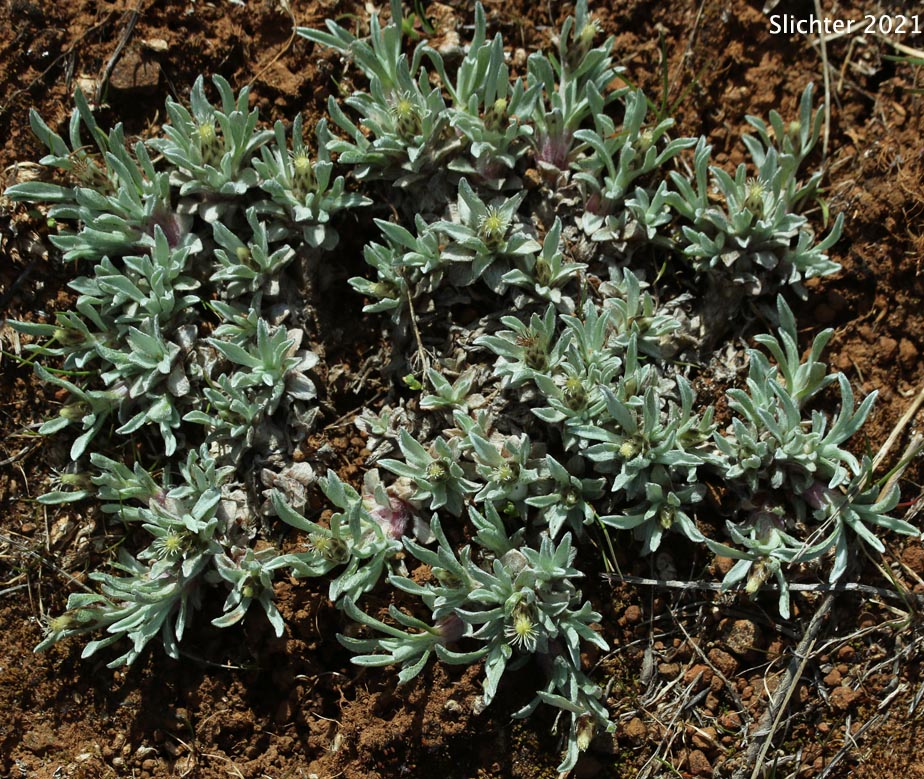 -
- 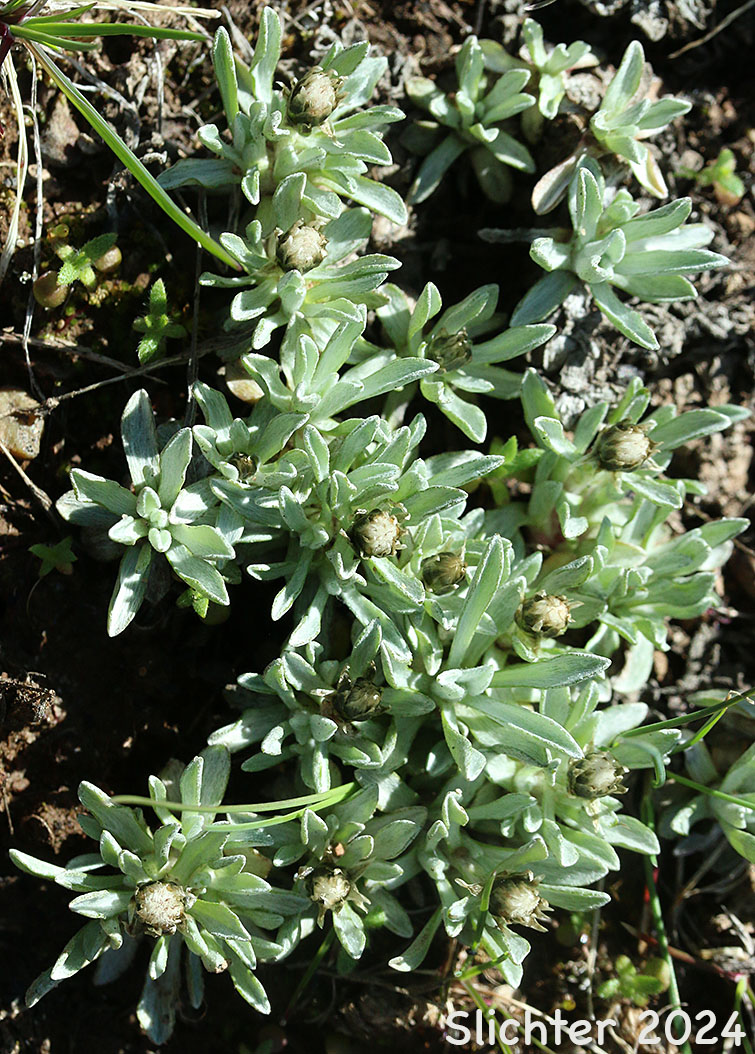
Low pussy-toes observed at left near the Klickitat Breaks, Soda Springs Unit of the Klickitat Wildlife Area.........May 31, 2021. The low pussy-toes image at right was taken in open oak/pine forest east of the east rim of Canyon Creek, Klickitat Wildlife Area......March 30, 2024.
Characteristics:
Low pussytoes are perennial wildflowers with floral scapes arising up to 3
cm high from a branching, woody base. This species is not stoloniferous. The
numerous basal and stem leaves are oblanceolate to linear-spatulate in shape,
measuring 8-30 mm long and up to 5 mm wide. The leaves and stems are fairly
densely covered with white woolly hairs.
The flower heads are solitary and fairly broad. The flowers
are imperfect, with the staminate and pistillate flowers found on separate plants.
The involucres of the staminate haeads are 5-7 mm high with ovate, obtuse bracts
that are brownish. The pistillate involucres are 12-15 mm high with lanceolate
to linear bracts that are brownish or reddish-brown tinged. The plants typically
bloom in the Columbia River Gorge from April into May.
Habitat:
Low pussytoes are plants of dry open places in the foothills
and lowlands.
Range:
Low pussytoes may be found from southern British Columbia south
along the east side of the Cascades and Sierra Nevada to southern California,
east to Montana, Nebraska, and Colorado.
In the Columbia River Gorge, Antennaria dimorpha is found
between the elevations of 200'-3000' from east of Bingen, WA and on east.

Low pussy-toes, all with staminate flower heads, as seen atop the Columbia
Hills.........May 1, 2005.

The photo above shows a close-up of the pistillate
flower head of low pussytoes, which has involucral bracts 10-15 mm long and
tinged at least in part with brown or reddish brown. The heads appear narrower
and more elongated than those of the staminate heads. Photographed at Horsethief
Butte, several miles northeast of The Dalles, OR...............April 24, 2006.
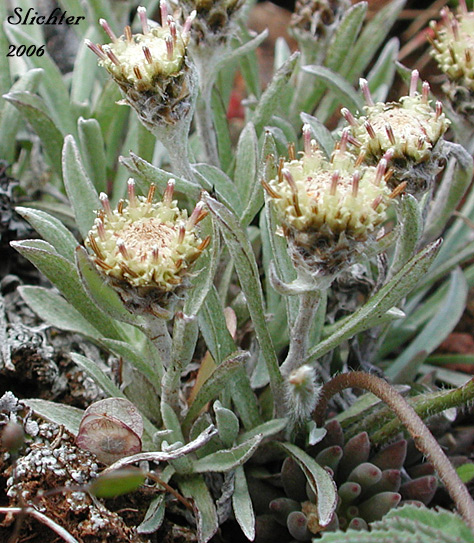 -
- 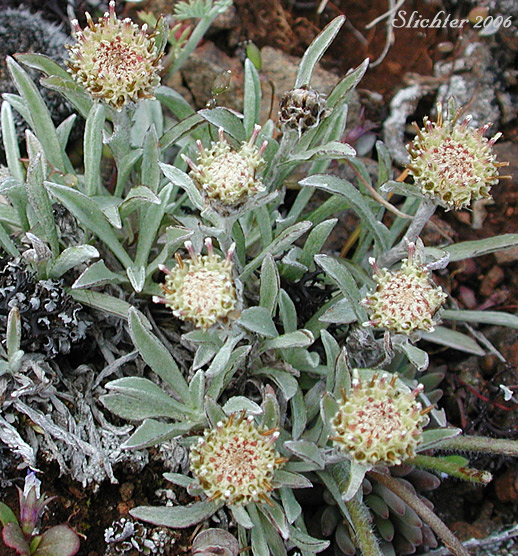
The photo above shows a close-up of low pussytoes
with Idahoa scapigera and Sedum lanceolatum at its base........May
1, 2005. This view shows the staminate flower heads which are broader
and shorter than the pistillate head seen above.
A broad cushion of low pussytoes with staminate flower heads as seen at the eastern rim of Canyon Creek in the Klickitat Wildlife Area.........April 6, 2013.
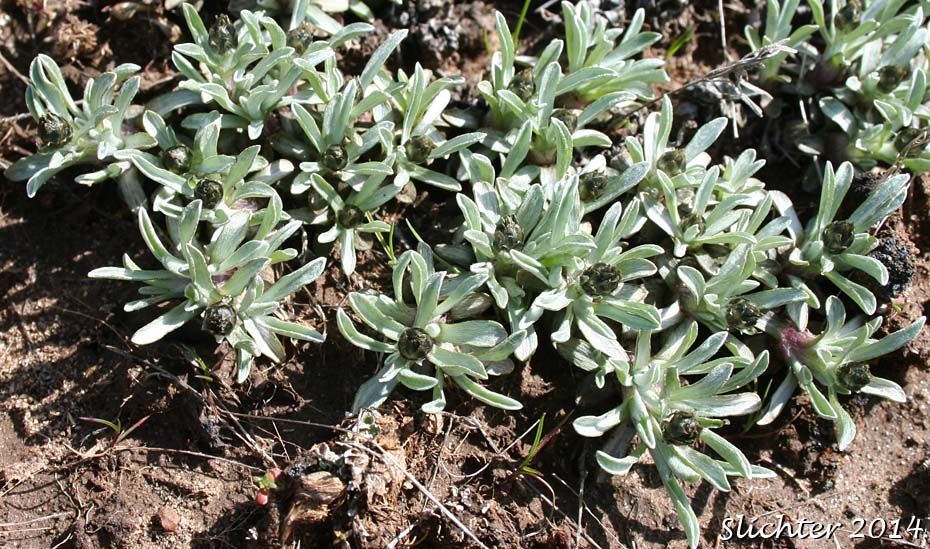
Low pussytoes in bud as seen along the eastern rim of Canyon Creek in the Klickitat State Wildlife Area.........March 21, 2014.
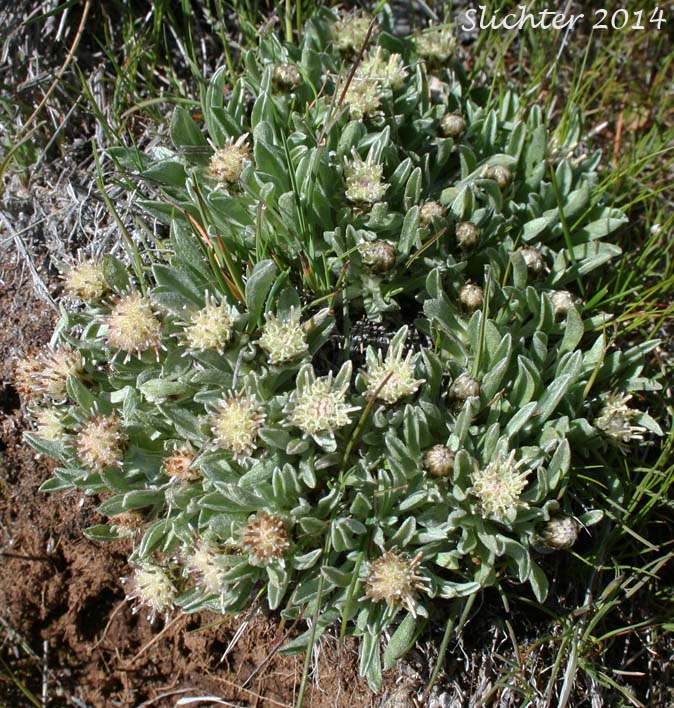
Low pussytoes as seen high in the Columbia Hills State Park...........April 12, 2014. Staminate flower heads are shown in this view.
Paul Slichter